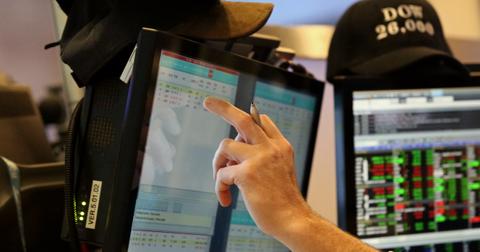Why DIA Is the Best Dow Jones ETF Among the Pack
There are only a few ETFs that track the Dow 30. One of the ETFs in particular is the right choice. Why does the ETF stand out from the others?
Mar. 9 2021, Updated 1:39 p.m. ET
ETFs have a lot of benefits. As a basket of securities, you can track all kinds of sectors, indices, and strategies. The Dow Jones is one index to track, and there are only a few ETFs doing the good work.
While you don't have many choices, the answer of which Dow Jones ETF is best is a clear one.
What's the best Dow Jones ETF?
There are just a few ETFs tracking the Dow. First and foremost, we've got the SPDR Dow Jones Industrial Average ETF Trust (DIA). This ETF is true to the price-weighted fashion of the index itself. Interestingly, the Wall Street Journal editors select the holdings for this one.
DIA's assets are massive and its track record is lengthy. It also functions under a unit investment trust (UIT) structure, which means that it's always carrying every equity within the index it tracks. On March 9, the top three holdings for DIA were UnitedHealth Group (UNH), Goldman Sachs (GS), and The Home Depot Inc.
Another option is the Guggenheim Dow Jones Industrial Average Dividend ETF (DJD). Unlike the price-weighted tracking that the Dow is known for, DJD weighs based on a trailing 12-month yield. On March 9, DJD holds JPMorgan (JPM), Goldman Sachs, and Travelers Companies (TRV) at the top.
Finally, there's the First Trust Dow 30 Equal Weight ETF (EDOW). This switches up the weight protocol as well and gives each of the current 30 Dow-based blue chips equal weight in their portfolio. As a result, there aren't any particular holdings at the top. Instead, each one weighs about 3.33 percent in the fund's portfolio.
Why DIA is the best index-tracking ETF
Ultimately, DIA has a history of matching the market (or coming close to it). It's also the only ETF that's holistically representative of the Dow 30, including the fashion in which it's weighted.
DIA has a much lower expense ratio than the others at 0.17 percent (compared to 0.3 percent for DJD and 0.5 percent for EDOW). This means that you earn heightened returns because you're paying less in fees.
DIA's returns are also solid. This means 34.58 percent in one year and 86.54 percent in five years. This is better than DJD (31.29 percent in one year, 63.93 percent in five years) and EDOW (32.3 percent in one year, 45.86 percent in five years).
DIA is a secure long-term investment, but it's best paired with other indices.
The Dow alone isn't the definition of diversification. After all, the assets within the index are limited to 30 and they're all large-cap companies. Pairing your DIA investment with ETFs that track the S&P 500 and the Nasdaq is a smart move. For example, you might want to include DIA as well as the Nasdaq-tracking Invesco QQQ Trust (QQQ) and the SPDR S&P 500 ETF (SPY).
Vanguard doesn't have a Dow-specific ETF
While you can't invest in the Dow alone through Vanguard, you can focus on large-cap stocks that might overlap with the blue-chip securities of the Dow 30Vanguard Large-Cap ETF (VV). You can do this through the Vanguard Large-Cap ETF (VV), which has a 44.2 percent one-year return and 97.1 percent five-year return. This is largely in thanks to its broader pool of securities beyond the Dow 30 limitations.


